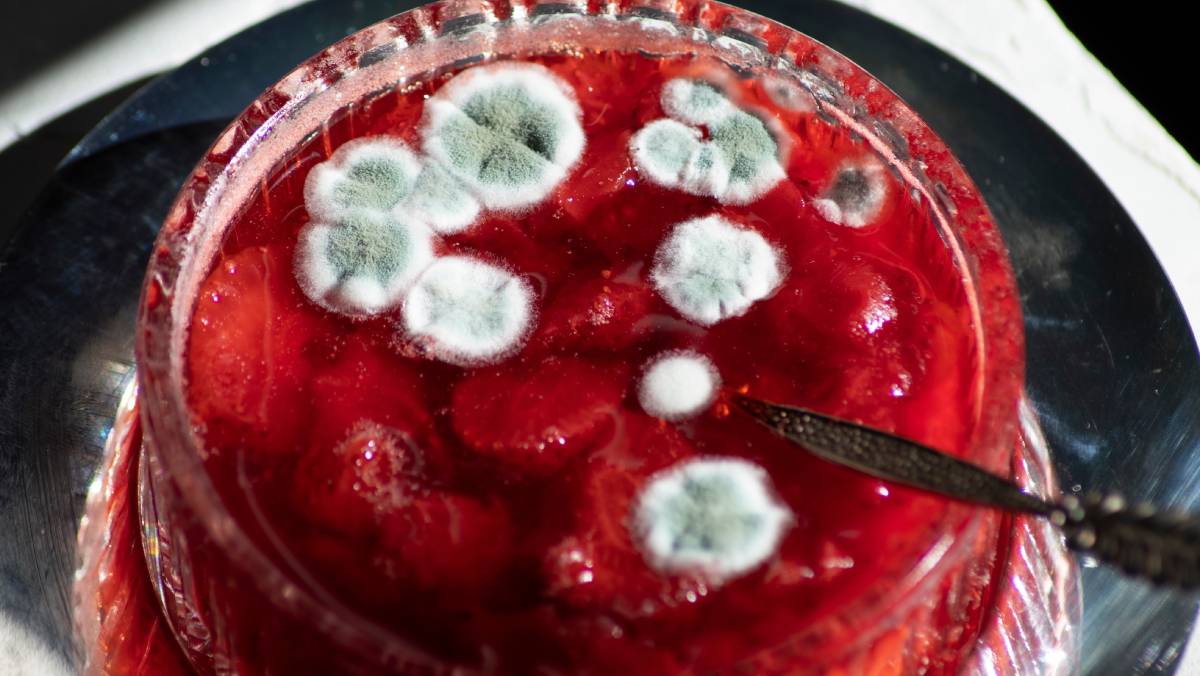What’s your mould tolerance? Not on the ceiling, but in your food?
Do you toss your buns as soon as you see those small telltale, small white spots, or do you carefully carve off the offending area and toast it, hoping the heat will burn away the badness?
Mould can be confusing. It’s bad in milk, but good in some cheeses. And we all have a nanna who used to scrape the mould off jam, and happily dip her knife into the rest.
But first, what exactly is the mould on your food?
Well, it’s a type of fungi, related to mushrooms and yeast.
The spores exist almost everywhere, and mould thrives in moist, poorly ventilated areas.
In nature mould plays a vital part in breaking down dead organic material. But it can also infect living plants and animals, and structures.
Growing concern

No-one knows how many varieties of mould exist, but even the low estimate runs into tens of thousands.
We all know penicillin was created from mould, which sounds great, but some moulds can cause allergic reactions and respiratory problems. And some moulds produce mycotoxins that can make you very sick indeed, up to the point of cancer.
So what is safe to eat with mould and what’s not?
Hard choices
Basically, it’s the difference between hard and soft food.
Foods with a high moisture content or porous foods with mould on them should be thrown out. Such foods include casseroles, yoghurt, cooked grains and pastas, soft fruits, vegetables, sauces and soft cheeses or dips. And sorry nanna, but also jam.
Porous foods with mould you should throw out include bread, cakes and pastries.
For ‘harder’ foods such as cheese, salami and hard vegetables including carrots and cabbage, it’s safe to cut the mouldy portion off and eat the rest.
A good guide is to cut at least one to two centimetres from the mould spot. Make sure the knife doesn’t come into contact with the mould infestation before you cut.
So what can you do to minimise mould in your home.
The enemy of mould is good ventilation and cleanliness.
According to CBHS Health, some good starting points are:
- making sure your fridge temperature is 5°C or below
- storing cooked food safely by putting it into shallow dishes or smaller portions to help cool the food as quickly as possible
- food poisoning bacteria can grow in frozen food while it’s thawing so avoid refreezing any thawed food
- store raw food in sealed or covered containers in the bottom of your fridge to avoid liquid such as meat juices dripping down into cooked food
- choose strong, non-toxic food containers with tight fitting lids to minimise potential contamination
- check use-by dates on food and if in doubt, throw it out.
It’s also a good idea to regularly air your home on warmer days, have your heating ventilation and air-conditioning units serviced regularly and use exhaust fans when cooking or showering.
What’s your strategy when it comes to mouldy food? Do you cut it off or chuck it? Why not share your tactics in the comments section below?

